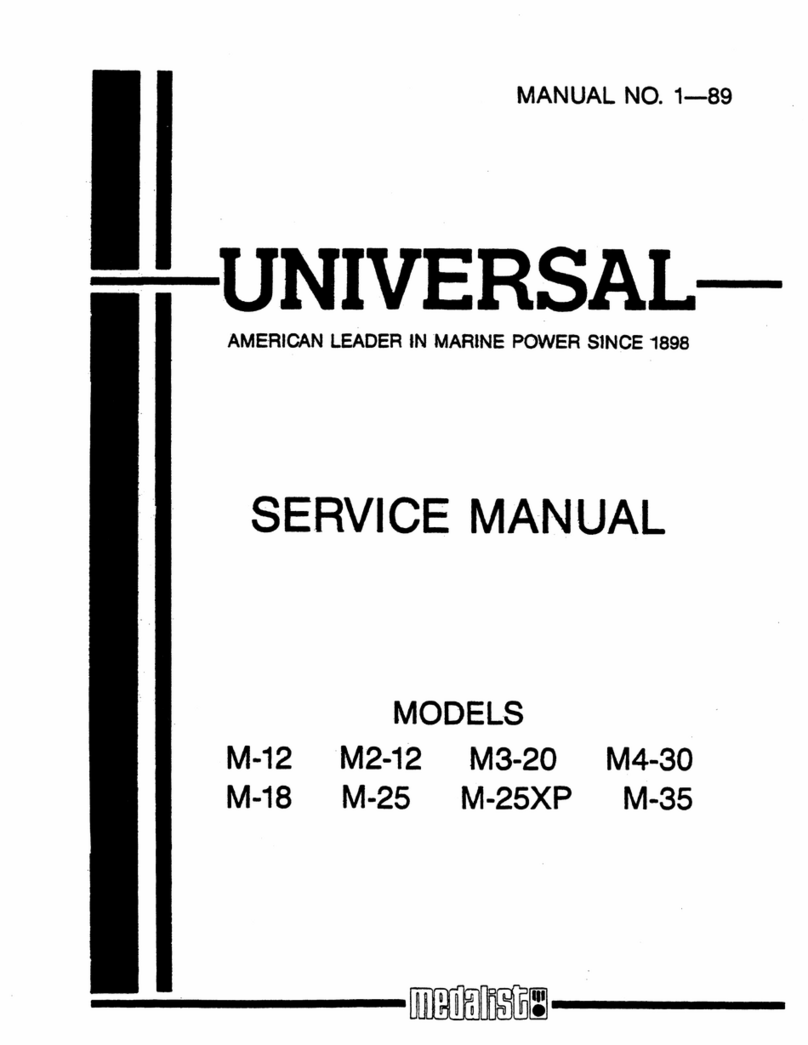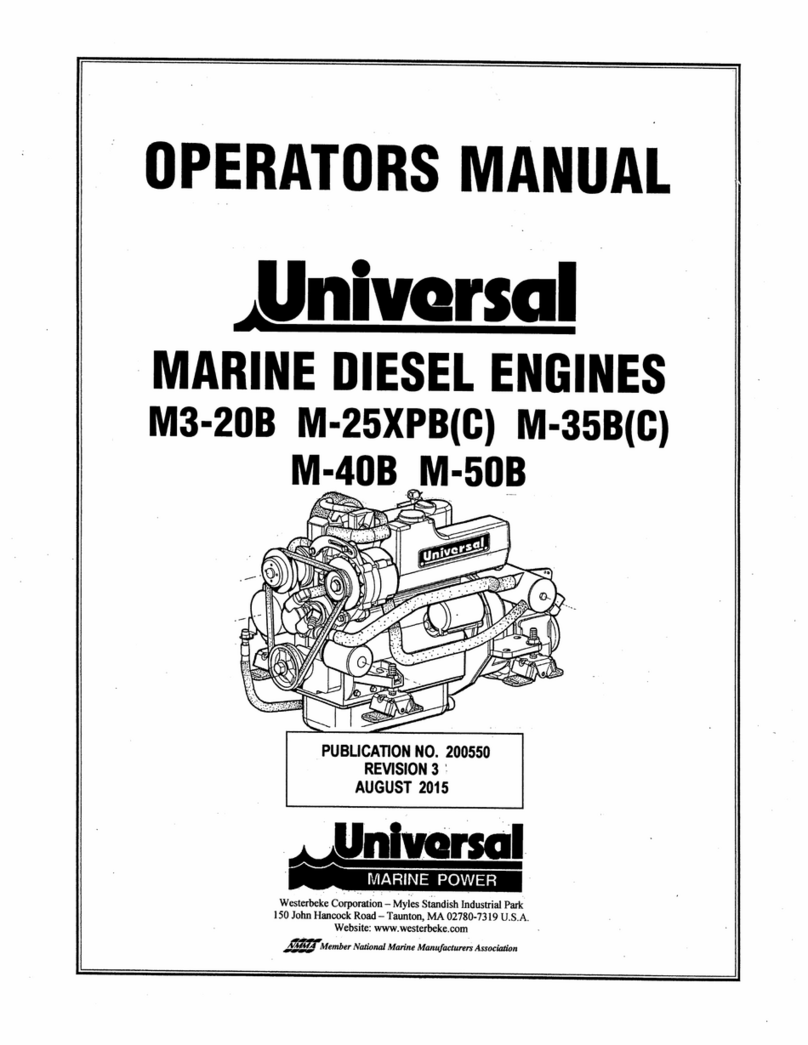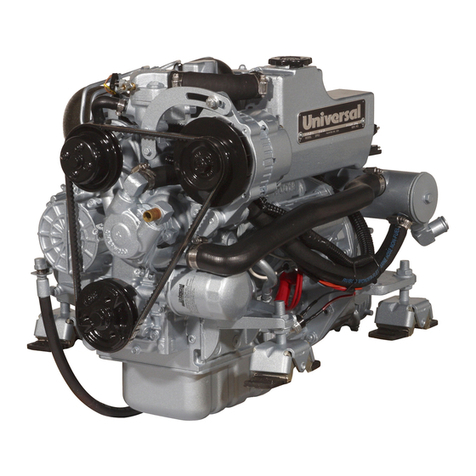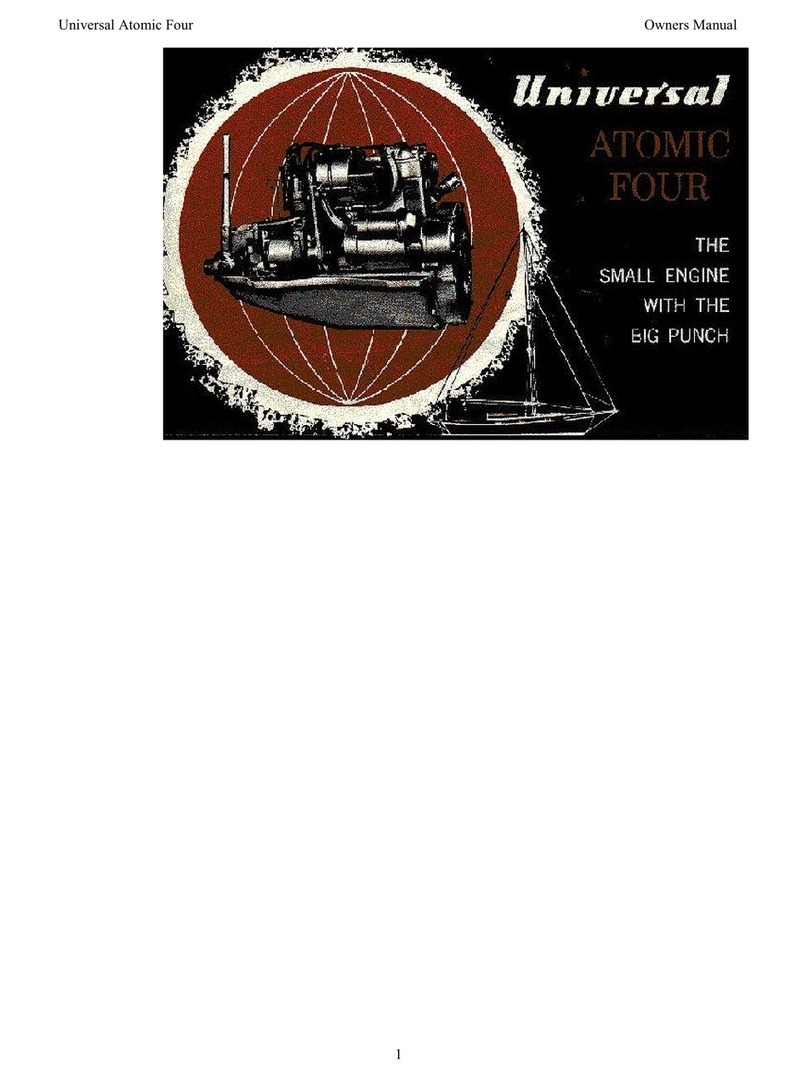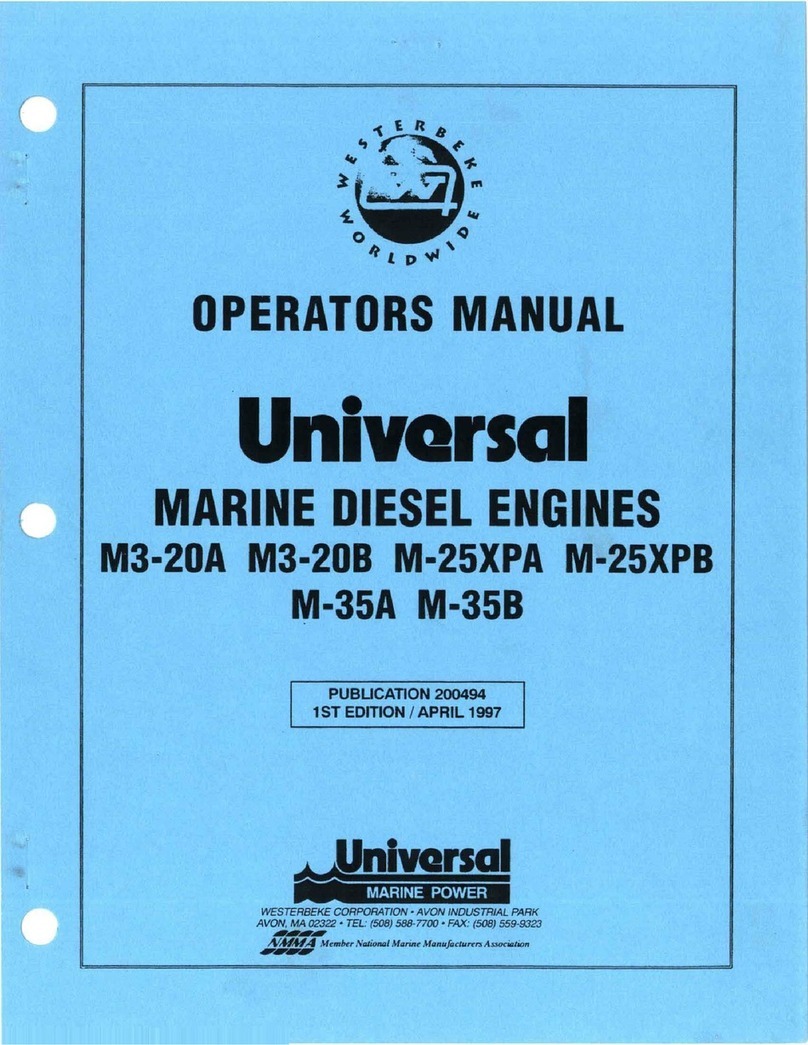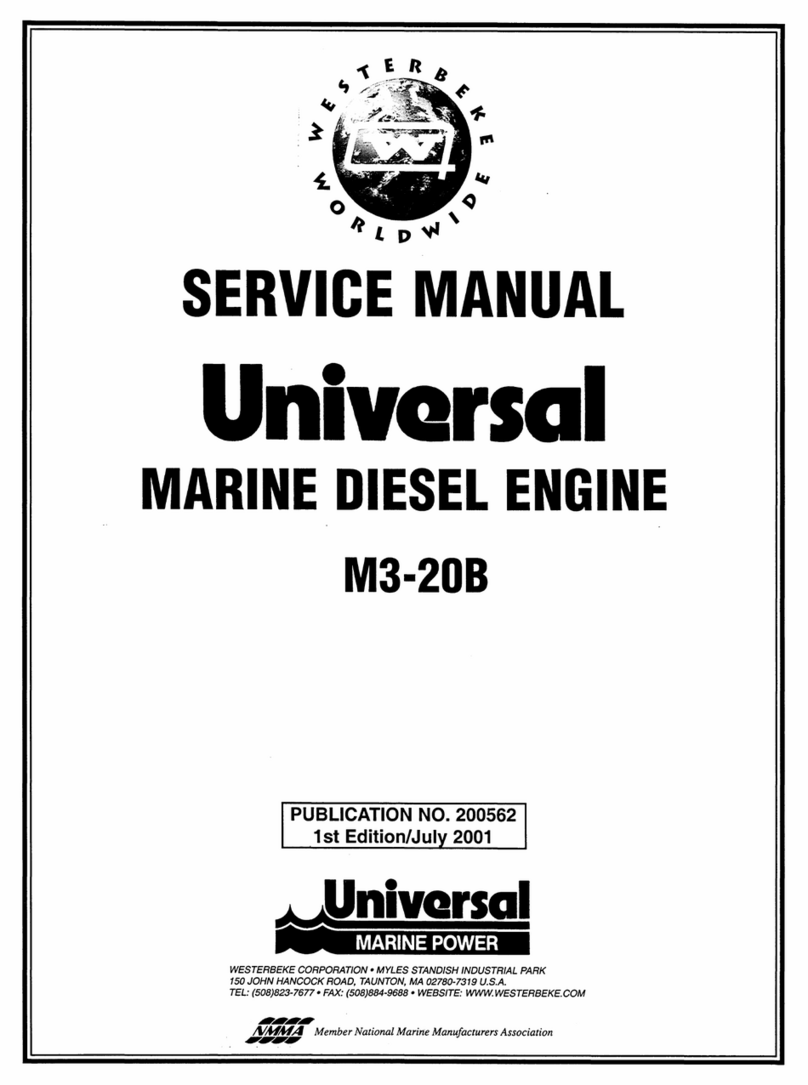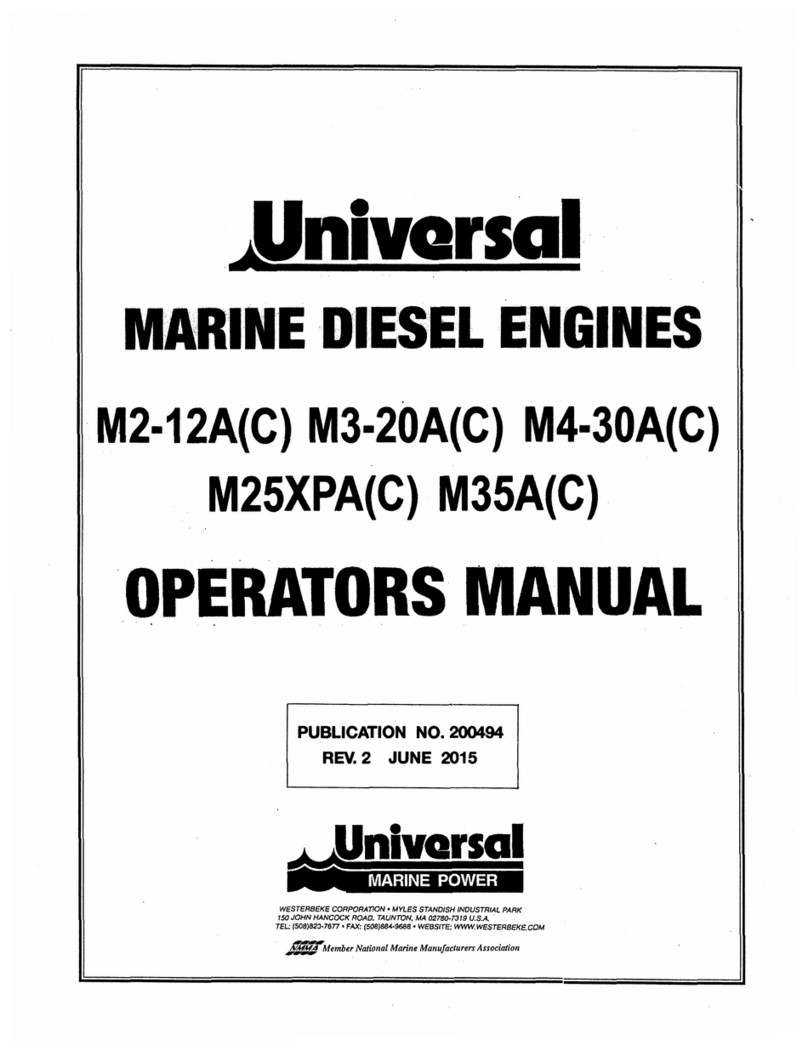SALT AIR AND WATER. PROBLEMS THAT MIGHT DEVELOP DUE TO IMPROPER CARE OR
OPERATION IN THE FIELD CANNOT BE CONSIDERED AN ENGINE DEFECT AND ARE NOT
COVERED BY THE NORMAL ENGINE WARRANTY.
IT IS IMPORTANT TO CHANGE OIL FREQUENTLY AS RECOMMENDED IN THE OWNERS
MANUAL. CONTAMINATED OIL DOES NOT PROVIDE ADEQUATE LUBRICATION.
IMPORTANT NOTE:
AT ALL TIMES, REGARDLESS OF FREQUENCY OF OPERATION, IT IS NOT GOOD PRACTICE
TO RUN THE ENGINE FOR ONLY A SHORT PERIOD OF TIME. IT SHOULD BE OPERATED 30
MINUTES AT A VERY MINIMUM TO REACH NORMAL OPERATING TEMPERATURE.
IT IS ALSO GOOD PRACTICE TO OCCASIONALLY RUN THE ENGINE AT FULL LOAD FOR A
PERIOD OF TIME (A MINIMUM OF 5 MINUTES) TO KEEP THE ENGINE CLEAN OF MOISTURE
AND CARBON ACCUMULATIONS FROM SHORT RUN PERIODS OR LONG IDLE PERIODS.
NEVER START THE MOTOR UNTIL THE MOTOR COMPARTMENT HAS BEEN VENTILATED BY
EITHER OPENING THE HATCH OR OPERATING THE BLOWER TO REMOVE ANY POSSIBLE
FUEL FUMES.
MARINE ENGINE WARRANTY
PRODUCT WARRANTY
SELLER WARRANTS ALL PRODUCTS AND PARTS OF ITS OWN MANUFACTURE AGAINST
DEFECTS IN MATERIAL OR WORKMANSHIP FOR A PERIOD OF ONE (1) YEAR FROM DATE OF
SHIPMENT WHEN GIVEN NORMAL AND PROPER USAGE AS DETERMINED BY SELLER UPON
EXAMINATION, AND WHEN OWNED BY THE ORIGINAL PURCHASER. COMPONENTS
PURCHASED BY SELLER AS COMPLETE UNITS AND USED AS AN INTEGRAL PART OF
SELLERS EQUIPMENT WILL BE COVERED BY THE STANDARD WARRANTY OF THE
MANUFACTURE THEREOF. SELLER WILL REPAIR OR REPLACE F.O.B. ORIGINAL SHIPPING
POINT (BUT NOT INSTALL) ANY PART OR PARTS OF ITS MANUFACTURE WHICH IN ITS
JUDGMENT, SHALL DISCLOSE DEFECTS IN EITHER MATERIAL OR WORKMANSHIP. IF
REQUESTED BY SELLER, PARTS FOR WHICH A WARRANTY CLAIM IS MADE ARE TO BE
RETURNED TRANSPORTATION PREPAID TO OUR FACTORY. THIS WARRANTY BECOMES
VOID IF ARTICLE CLAIMED TO BE DEFECTIVE HAS BEEN REPAIRED OR ALTERED IN ANY
WAY OR WHEN THE ARTICLE HAS BEEN SUBJECT TO MISUSE, NEGLIGENCE OR ACCIDENT
OR WHEN INSTRUCTIONS FOR INSTALLING OR OPERATING HAS BEEN DISREGARDED. WE
MAKE NO OTHER WARRANTY, EXPRESS OR IMPLIED, AND MAKE NO WARRANTY OF
MERCHANTABILITY OF OF FITNESS FOR ANY PARTICULAR PURPOSE, AND THERE ARE NO
WARRANTIES WHICH EXTEND BEYOND THE DESCRIPTION OF THE FACE HEREOF. NO
EMPLOYEE OR REPRESENTATIVE IS AUTHORIZED TO CHANGE THIS WARRANTY IN ANY
WAY OR GRANT ANY OTHER WARRANTY. THE REMEDIES HEREINABOVE AFFORDED TO
THE PURCHASER ARE EXCLUSIVE OF ALL OTHER REMEDIES PROVIDED BY LAW. SELLER
SHALL NOT BE LIABLE FOR INDIRECT OR CONSEQUENTIAL DAMAGES WHERE THE LOSS
SUSTAINED IS OF A COMMERCIAL NATURE.
PRODUCT IMPROVEMENTS
